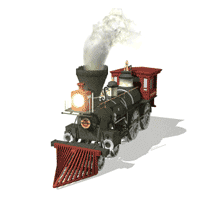| Model Logic Puzzles |  |
|---|
| Model Logic Puzzles |  |
|---|

I will explain how to model a logic puzzle for Mystery Master. Wikipedia states: "In artificial intelligence, model-based reasoning refers to an inference method used in expert systems based on a model of the physical world."
In the physical world, a logic puzzle consists of text. The text may contain properties of the puzzle such as its title, author, and level of difficulty usually given by one or more stars. While interesting, properties won't help solve a logic puzzle.
What will help are the clues of the puzzle. The clues are usually given in a list, but sometimes they can also be in the introduction.
To model a logic puzzle, the text of the logic puzzle must be parsed into specific types of data. Everything that is essential to solving a logic puzzle must be captured by this data. There is one important thing to remember as you go forward:
All of the relationships between the nouns in a logic puzzle must be expressed as either facts or rules.
The following forms of the Mystery Master application display the "pieces of the puzzle". For more information on any of these forms, please read the guide. The data for these forms comes from the logic puzzle "Five Houses".
The Nouns form displays the objects in the logic puzzle. Please read the article on nouns for more information.
The Verbs form displays the verbs in the logic puzzle. The verbs, along with the links, are used together to describe all of the relationships between the nouns in the logic puzzle. Please read the article on verbs for more information.
The Links form displays the links in the logic puzzle. In addition, it visually represents the relationships between two nouns of the link's noun type. The links, along with the verbs, are used together to describe all of the relationships between the nouns in the logic puzzle. Please read the article on links for more information.
The Facts form displays the facts for the logic puzzle. The facts are the static statements given by the clues. A fact describes the relationship between two nouns, and has the form: "noun 1 verb link noun 2". Please read the article on facts for more information.
The Rules form displays the rules for the logic puzzle. The rules are the conditional statements used to describe the relationships between nouns. Please read the article on rules for more information.
All of this data, along with any required programming, resides in a puzzle module. Depending on the technology used, this puzzle module can be programmed in a language such as C#, Java, or JavaScript.
As you can hopefully deduce (I made a pun), the text of a logic puzzle must be converted into data that Mystery Master understands. Until a program can parse this text with 100 percent accuracy, you can model a logic puzzle by hand. Or more precisely, with your thumbs, seeing as that's how most people like to type.